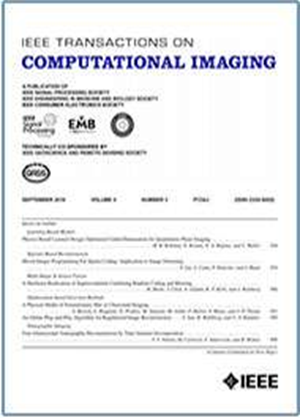CLAMP:主要即插即用的相干3D激光雷达成像
IF 4.2
2区 计算机科学
Q2 ENGINEERING, ELECTRICAL & ELECTRONIC
引用次数: 0
摘要
相干激光雷达使用啁啾激光脉冲对远距离目标进行三维成像。然而,现有的相干激光雷达图像重建方法没有考虑到系统的孔径,导致分辨率不够理想。此外,这些方法使用最大化最小化的计算效率,但这样做没有收敛的理论处理。在本文中,我们提出了相干激光雷达孔径模型即插即用(CLAMP)用于多视相干激光雷达图像重建。CLAMP使用多智能体共识平衡(PnP的一种形式)将神经网络去噪与相干激光雷达的精确代理正演模型相结合。此外,CLAMP引入了一种计算效率高的基于fft的方法来考虑系统的孔径,以提高重建图像的分辨率。进一步,我们形式化了在共识优化问题中的多数-极小化的使用,并证明了收敛到精确的共识均衡解。最后,我们将CLAMP应用于合成和测量数据,以证明其在生成高分辨率,无斑点的3D图像方面的有效性。本文章由计算机程序翻译,如有差异,请以英文原文为准。
CLAMP: Majorized Plug-and-Play for Coherent 3D Lidar Imaging
Coherent lidar uses a chirped laser pulse for 3D imaging of distant targets. However, existing coherent lidar image reconstruction methods do not account for the system's aperture, resulting in sub-optimal resolution. Moreover, these methods use majorization-minimization for computational efficiency, but do so without a theoretical treatment of convergence. In this paper, we present Coherent Lidar Aperture Modeled Plug-and-Play (CLAMP) for multi-look coherent lidar image reconstruction. CLAMP uses multi-agent consensus equilibrium (a form of PnP) to combine a neural network denoiser with an accurate surrogate forward model of coherent lidar. Additionally, CLAMP introduces a computationally efficient FFT-based method to account for the system's aperture to improve resolution of reconstructed images. Furthermore, we formalize the use of majorization-minimization in consensus optimization problems and prove convergence to the exact consensus equilibrium solution. Finally, we apply CLAMP to synthetic and measured data to demonstrate its effectiveness in producing high-resolution, speckle-free, 3D imagery.
求助全文
通过发布文献求助,成功后即可免费获取论文全文。
去求助
来源期刊

IEEE Transactions on Computational Imaging
Mathematics-Computational Mathematics
CiteScore
8.20
自引率
7.40%
发文量
59
期刊介绍:
The IEEE Transactions on Computational Imaging will publish articles where computation plays an integral role in the image formation process. Papers will cover all areas of computational imaging ranging from fundamental theoretical methods to the latest innovative computational imaging system designs. Topics of interest will include advanced algorithms and mathematical techniques, model-based data inversion, methods for image and signal recovery from sparse and incomplete data, techniques for non-traditional sensing of image data, methods for dynamic information acquisition and extraction from imaging sensors, software and hardware for efficient computation in imaging systems, and highly novel imaging system design.
 求助内容:
求助内容: 应助结果提醒方式:
应助结果提醒方式:


